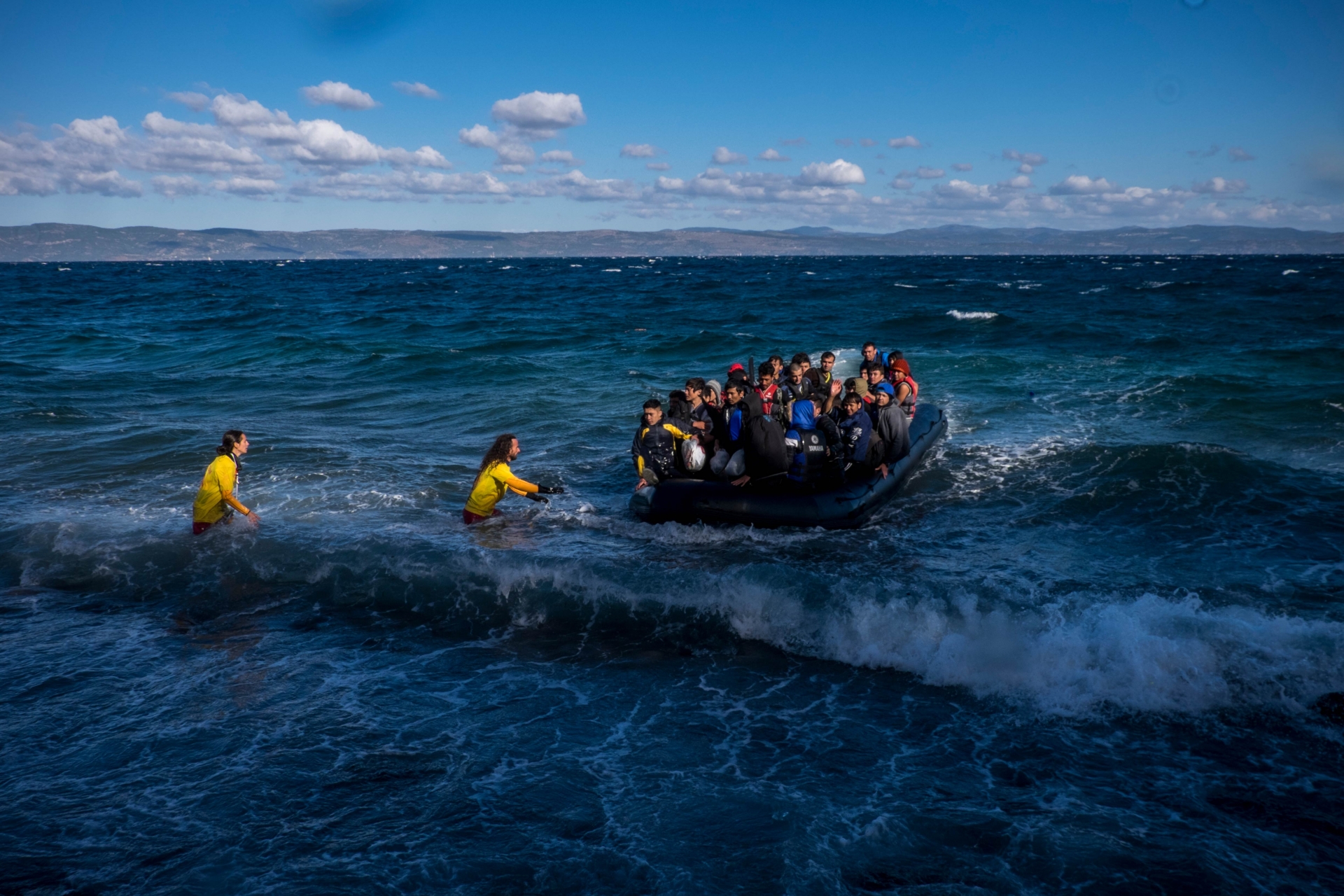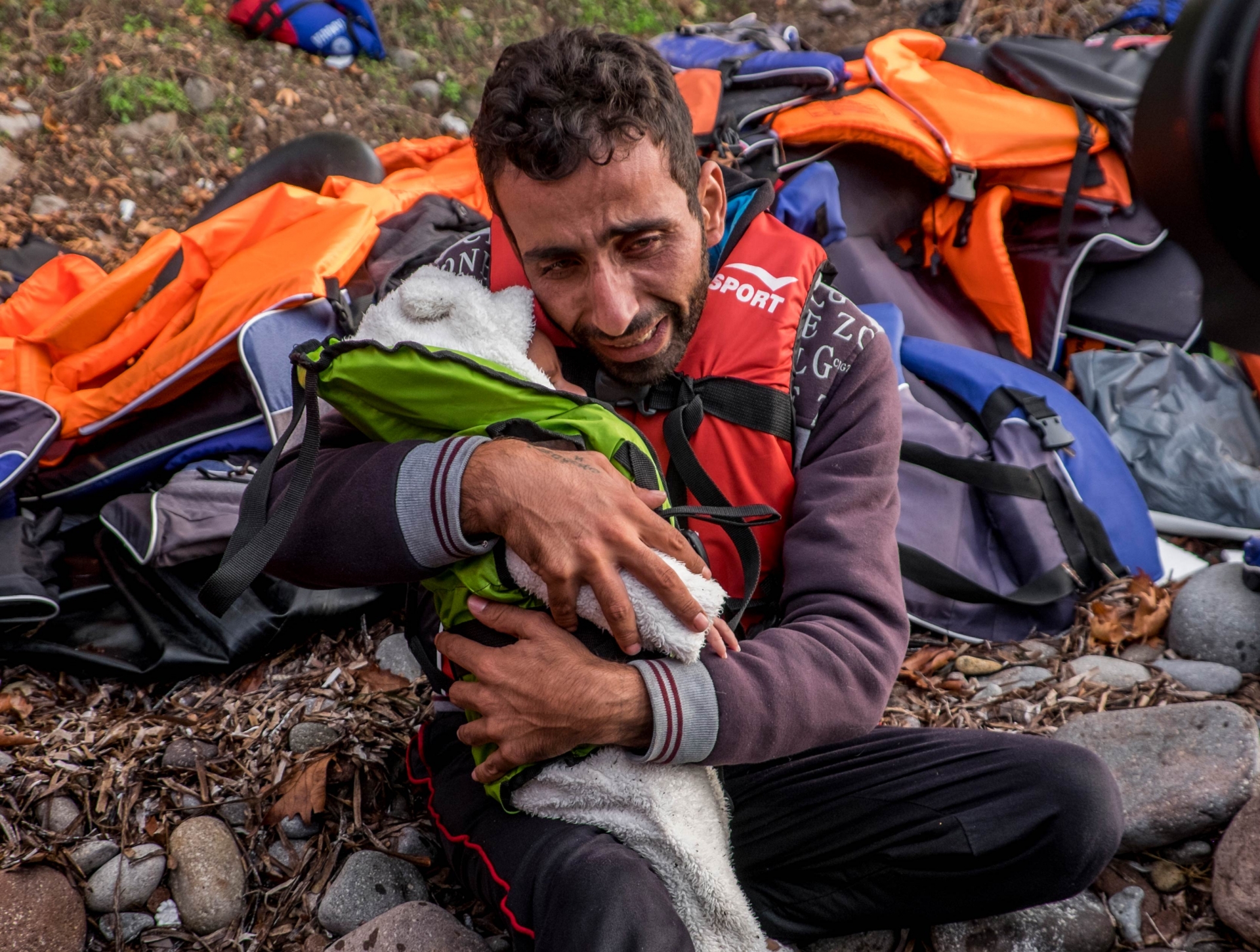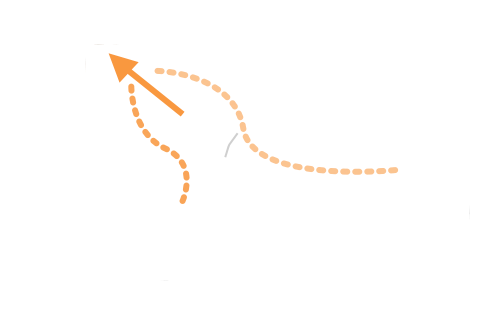Love and Death in Lesbos
By: Javier Bauluz
Terrified screams are heard in the moonlit night. Roiling waves pummel the shoreline as the boat full of refugees arrives from the Turkish coast. Nico and Fiorella scramble down the dark ravine. The screams grow louder with every wave. The Spanish volunteers dodge rocks and trees to reach the spot on the Greek island of Lesbos where they may be able to prevent another tragedy. Other volunteers tie a rope to their cars, and amid chaos and cries they start to bring ashore the babies and smaller children.
The European volunteers, helped by photojournalists with cameras on their shoulders, form a human chain and hand the drenched and scared infants and toddlers from one to another until they reach the top. While they help the other 50 people on the boat, the sounds of a motor signal a second boat has arrived just seconds before it crashes against the rocks. There are more screams, and more crashing waves that threaten to overturn the boat. The volunteers from ProActiva and a Palestinian doctor eventually help the 50 new arrivals reach land without injuries.

At the top of the ravine, fear turns into crying and cold. The smallest refugees shiver in the headlights of two vehicles and the moonlight while they are wrapped in thermal blankets donated by thousands of people around the world. A five-year-old girl, soaked and paralyzed by the shock, stares at the unknown photojournalist who holds her in his arms as he kneels on the dirt road. He speaks to her in an unfamiliar but soothing language and rubs her firmly to warm her, while he waits nervously for her mother to emerge from the black sea.
One by one, her four younger brothers arrive and are they are reunited amidst the chaos. Finally, after 40 long minutes, a woman with eyes full of tears throws herself over the children and pulls them together in a long embrace. The photojournalist hands her the girl, her daughter, and tries to take a photo that will sum up the pain, the fear, the hope and the love in that universal embrace. After a few seconds, the girl’s father joins the family.
The reporter is unable to capture the image with his camera because of the emotion that keeps him from adjusting the lens as he tries urgently to cover the brothers with thermal blankets and loads them on a van to take them to a small camp where volunteers from all over Europe provide them with dry clothes, water, something hot to revive the body and many hugs and smiles.
Another day in Lesbos
Thirty, forty, fifty boats arrive in Lesbos every day. Out of the more than 800,000 asylum seekers who arrived in Europe in 2015, about 214,000 were children – nearly 30 percent. By night and by day, in good and bad weather, the scenes repeat themselves: Fear, cold, anguish, joy, love, solidarity and – too often – death.
Oscar and Gerard rush to prepare the boat. They know every second counts. Hundreds of refugees are drowning a few miles from their base in the town of To Kyma. Nico and Oriol go in search of empty stretchers. They don’t know what they are going to find at sea. “We had to decide who lives and who dies,” Oscar Camps tells us later. He is the soul of the rescue campaign, initially financed with his own savings and later with the solidarity of thousands of people around the world because of the clear incompetence and inaction of European governments.
“The hardest part was taking the children from the arms of their parents, knowing it was very possible they would never see each other again,” Camps says.
The Greek coast guard and European Frontex ships – designed to patrol, not rescue – proved totally ineffectual to save more than 40 refuge seekers, many of them children. In the end, they drowned or disappeared. Volunteers could not keep up with the task of pulling the refugees out of the water, hoisting them into the high-sided patrol boats and reviving many others. Images filmed from a nearby boat by freelance videojournalist Mikel Konate capture the tragedy.

Welcome to Europe
The Greek islands are only the first stage of an exodus that puts hundreds of thousands of refugees from Syria, Iraq, Afghanistan, Pakistan, Sudan, Bangladesh and many other countries on a journey more than 600 miles long, withno clear destination. After crossing the Aegean Sea from Turkey, they will traverse Greece, Macedonia, Serbia, and Hungary, or Croatia and Slovenia, until they reach Austria. Most will head to Germany or Sweden, the rest to other European countries.
On this same night, more than 200 survivors are helped by nearby residents and volunteers from small European organizations in the port of Molyvos. Several toddlers fight for their lives in the arms of volunteer doctors, while dozens of refugees take shelter in a small Orthodox church and a community building.
Two girls and two boys, about seven years old, are found roaming the port. They search for their parents, lost at sea a few hours earlier. One volunteer takes them to the community building, jammed with dozens of survivors. The children peek from the doorway, hoping their parents are among the rescued. The volunteer shouts the girls; surname, above the whimpers and sobs that fill the hall. A woman stands up. The girls jump over refugees on the floor, covered with blankets, and hug her. When the photojournalist leaves the building later, the two boys are sitting on a corner, alone. Their parents are still nowhere to be found.
In the next few days, photojournalists take on the task of searching the beaches for bodies of victims, to document what no one wants to see. It’s heartbreaking to see a Greek woman weep uncontrollably as she cradles the tiny body of a drowned baby she’s just found near her house.
About 30 percent of the migrants drowned in the Aegean are children. Like Aylan Kurdi, the child whose photo was seen around the world in August. Ninety other children died in the month of October alone. Those drownings could have been avoided if only Europe had opened the land border between Turkey and Greece.
Now, after passing through the crowded police registration camps in the Lesbos towns of Moria and Kara Tepé, the refugees must board a ferry from Mytilene to Athens and start the land part of their journey into the heart of Europe.
One Syrian father, exhausted from the Aegean crossing, tells us in perfect English, “I am only looking for a refuge for my children.” He adds, “You would do the same if there was a horrible war in your country.”



